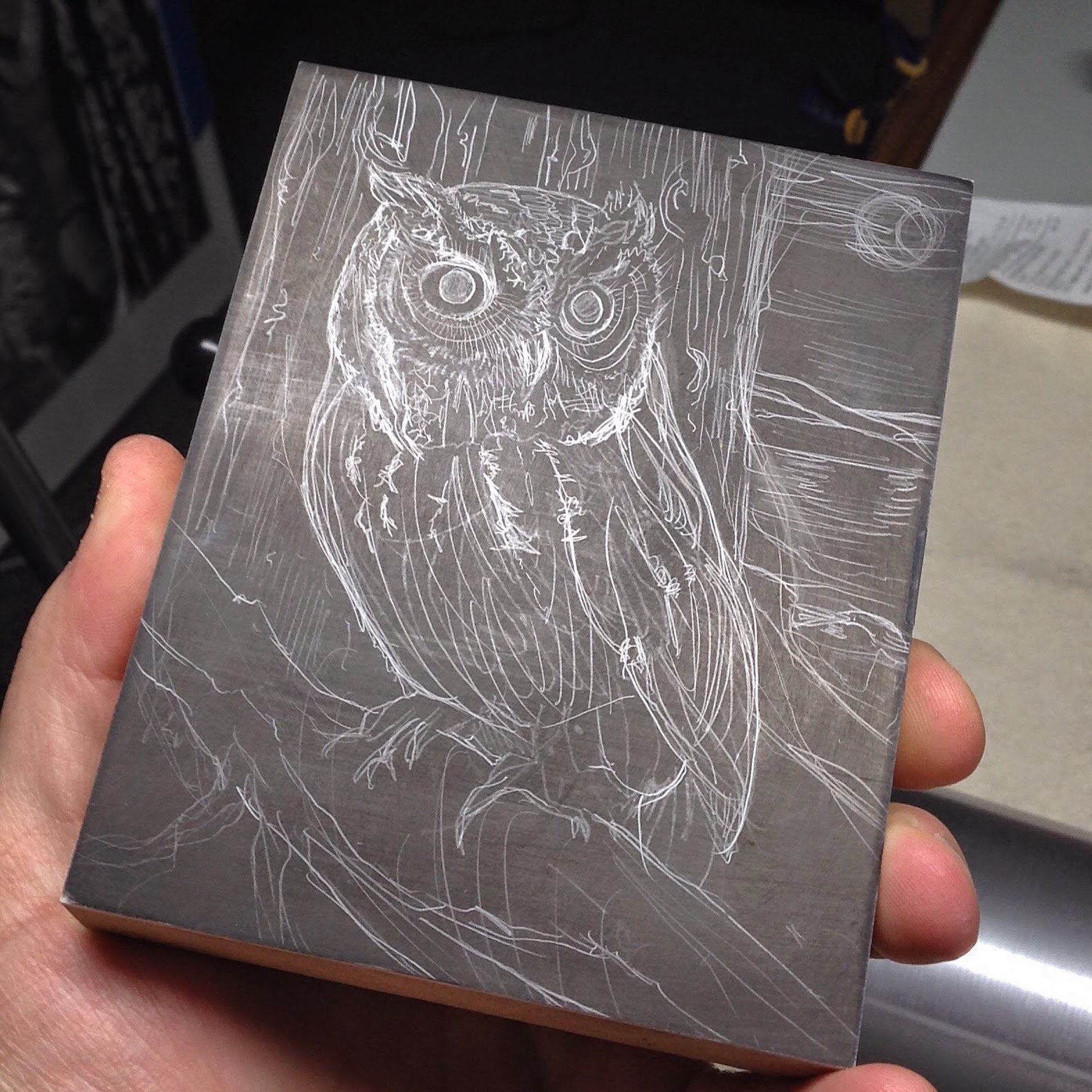Snowed IN
The 1st engraving I have made this year is of this little guy, the screech owl. This blog post is going to show the entire process from initial pencil sketch to finished print!
I have a lot of people ask about the process of engraving Resingrave blocks and then printing them. Resingrave is a tricky medium. It's a small block of wood with a layer of resin on the top of it. This resin layer can be engraved into using tools called burins. The burin tool is great at removing very fine lines, which help in making very detailed images.
Each line I engrave out of the block will not print. The areas I do not engrave will print black. It is a lot like working backwards, or drawing with a white pencil on black paper. The block is inked and printed "relief style" on a press. Basically it is printed like a stamp, so the ink rolls over the areas that were left alone and not in the lines engraved into it. It's a lot of fun and takes a lot of patience!!
I started by taking the Resingrave block and staining it with some black ink. I then drew a rough pencil drawing to help guide me while engraving the lines away. The block size is only 4 x 5 inches, so this guy is little!
I started engraving the face of the owl first. The dime is here to show the scale of the engraving. I tend to engrave a little conservatively during this early stage by taking out very fine lines at first. Then I go back through and make wider thicker lines.
Once you engrave a line out you can't put it back! There's really no room for mistakes. That being said, ever block has a few!
Here's the block about 3 hours into the engraving. I've brought out a lot of the details in the head. The tools in the foreground are a few of the burin engraving tools I use. The points on the ends of them are razor sharp and very tiny, which allow for these tight details.
A few more hours in. The body is defined but reads a little flat. I will go back into the lines and widen many of them one at a time to add a little more highlight and make the owl more dimensional.
Started on the foreground branch of the tree.
After many hours of engraving the background and making little slight adjustments to the owls feathers we have the finished block!
I went on to make the corners of the block rounded and then started the printing process. I used our etching press for the printing. The block gets butted up in a wooden jig I've made to help it from shifting as it goes under the roller of the press.
The Big Reveal!
The block is inked in an oil-based black ink and a piece of paper is placed on top. I use Zerkall book weight paper for all of my engravings. It's run through the press and we have a print!
Here is the final print. The Screech Owl is 4x5 inches printed in a 6.5 x 7.5 inch piece of paper. The edition size is 90 prints with 3 Artist Proofs. They are available in our shop!!!




































